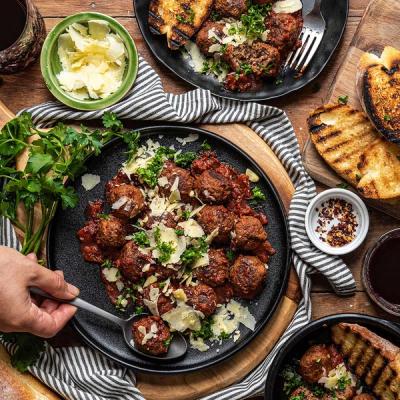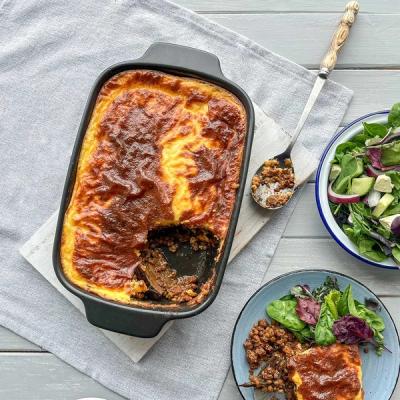Learn
Tips & Tricks A complete guide to scaling a recipeA complete guide to scaling a recipe
Whether you’re hosting a big family gathering or just want to make a single serving, knowing how to scale a recipe is a must-have kitchen skill. But it’s not always as simple as multiplying or dividing ingredient amounts. Let’s break down the process, dig into science, and highlight the common pitfalls so you can scale with confidence.
1. Understanding your recipe
Before you start multiplying, take a close look at your recipe. Is it a stew, a stir fry or something baked? Simple recipes like soups, stews and stir fries are the easiest to scale. Baked goods, such as a hot water pastry pie, are more sensitive to changes in ingredient ratios, pan size and even oven temperatures.


2. Calculate your scaling factor
Determine the recipes servings quantity and decide what it needs to be. For scaling up, you need to divide how many you wish to serve for, by how many the recipe says and you'll get the number you need to multiply each ingredient by.
- For example, the original recipe serves 4 people but you've got 10 coming over; 10 divided by 4 = 2.5. You would multiply each ingredient by 2.5.
3. Scale the ingredients carefully
Some ingredients are straightforward for scaling; others are a little tricky.
Items such as meat, vegetables, grains and most liquids can be multiplied by the factor with the same result. Other items such as spices and seasonings can intensify in flavour when scaled up. We recommend you start with 75% of the scaled amount, then taste and adjust as needed. The same goes for salt, it’s best to err on the side of caution and add to if needed.
Leavening agents such as baking powder, baking soda and yeast don’t always scale linearly. Too much can cause baked goods to rise too quickly and collapse, or taste bitter.
- For baking powder/soda: Use about 1 to 1.25 teaspoons per cup of flour, even when scaling up.
- For yeast: You can often use less than a straight multiplication, especially for longer fermentation
If you need a fraction of an egg, beat it and use the portion needed by weight or volume.
4. Check the equipment
Make sure your pots, pans and dishes can handle the new volume. For baking, the depth and surface area of your pan affect cooking time and texture. As for oven space, be ware of overcrowding as this will result in uneven cooking due to temperature irregularities.


5. Modify your cooking times and temperatures
Scaling a recipe isn’t just about changing ingredient amounts, you’ll need to adjust the cooking times too. Sometimes even temperatures need to be adjusted to ensure your dish comes out perfectly.
Here’s what you need to know:
Why cooking times change
Heat distribution
The more food you have in a pot, pan, or oven, the longer it takes for heat to penetrate to the center. This is especially true for baked goods, casseroles, and large roasts.
When you double a recipe, the volume increases faster than the surface area. This means heat reaches the center more slowly, so the middle may take longer to cook.
Tips and tricks for optimum results
- Check early and often. Start checking for doneness before the minimum recommended time, especially when scaling down.
- Rely on colour, texture, and internal temperature rather than time alone. This is especially true for meats and baked items.
- Test in the centre. For casseroles and baked goods, the centre is the last to cook. Always check here before declaring your dish done.
- Larger cuts of meat or bigger casseroles may need more resting time after cooking to allow heat to distribute evenly.

Posted by Beef + Lamb New Zealand







